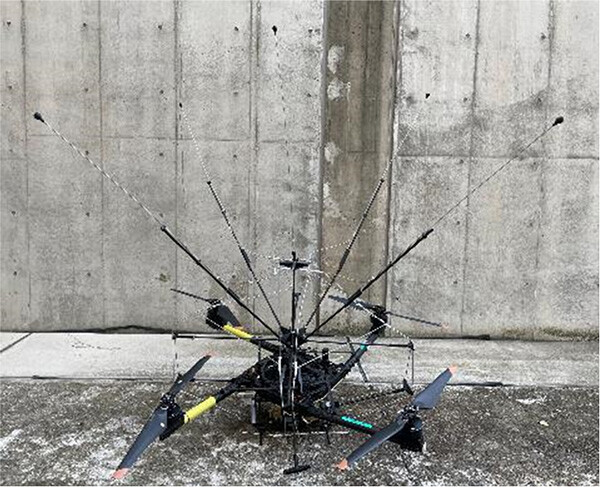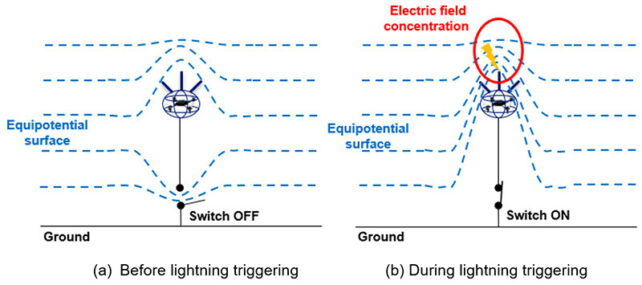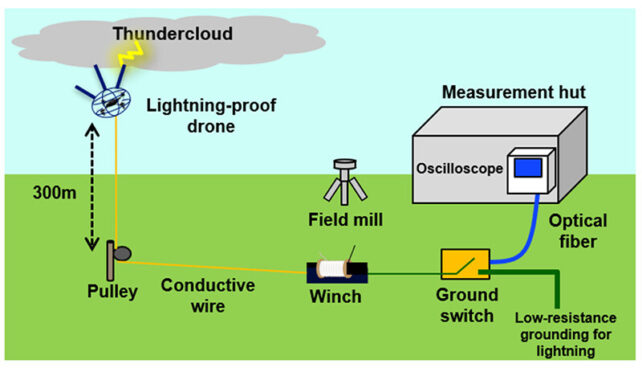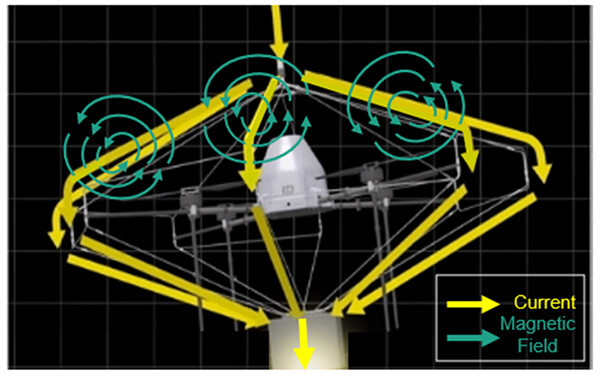A Tokyo-based tech giant claims to have created the first drone in the world to induce and guide lightning strikes.
Like Zeus on his winged chariot, or – more realistically – a flying lightning rod, the drone can trigger bolts of electricity from underneath thunderclouds, absorbing their incredible energy while taking little damage, and staying airborne throughout the experience, according to the company.
These claims are not peer-reviewed, but if the drone can do what the Nippon Telegraph and Telephone (NTT) group claims, the technology could theoretically protect cities and infrastructure from lightning damage the world over.

Each and every minute, about 6,000 lightning bolts strike the ground around the world. The power of a single lightning strike can set forests ablaze, split concrete, trigger steam explosions in trees, and cause power surges that can trigger widespread outages, melt electrical wiring, or fry electronic systems and devices beyond repair.
While putting lightning rods on buildings offers some protection, the NTT group has been working for years now on a better solution to protect their communications equipment.
Their drone might not look like much, but the company claims to have tested an iteration this winter in the Northern Hemisphere under an actual thundercloud.

As a storm approached a mountainous area of Japan's Shimane prefecture on December 13, 2024, the company's drone allegedly flew to an altitude of 300 meters (984 feet), carrying a conductive wire with it.
This wire attached the drone to a switch on the ground, and when flicked, this switch caused a surge of electrical energy through the wire, grounding the drone electrically. As a result, this supposedly increased the strength of the drone's surrounding electric field, triggering and attracting a lightning strike.

According to the NTT group, the drone survived the lightning strike and kept flying, although its protective covering did somewhat melt.

This isn't the first time that scientists have used something other than a lightning rod to trigger and attract an electric bolt from the skies.
Recently, some other scientists figured out that they could guide lightning bolts away from critical infrastructure if they shot lasers into the sky.
This laser 'decoy' was first proposed way back in 1974, and it took decades of lab work and several failed attempts with real lightning to get it to work.
Unlike a laser, however, a drone that attracts lightning must be protected from the electrical damage it absorbs. To get around that problem, the NTT group encased its device in a metal Faraday cage, which guides electricity around the device, reducing electromagnetic interference.

In lab tests, the drone was mostly protected by this cage, even when scientists at NTT say they hit it with artificial lightning that was five times more powerful than natural lightning.
"NTT aims to protect cities and people from lightning damage by flying drones – designed to withstand direct lightning strikes – to accurately predict lightning-prone locations, actively trigger strikes, and safely guide them away," reads a translation of a recent company press release on the drone technology.
Nations in the tropics tend to experience more lightning strikes than other parts of the world, but recent studies suggest pollution and climate change may also increase the risk of lightning damage in the years to come.
New technologies to reduce the harm of lightning storms are more than welcome, however, the NTT group goes a step further and says it is looking at ways to harness lightning energy, directed to the ground by their drones.
That sounds like a great idea, but at this point, it is entirely theoretical. The batteries to catch such vast amounts of energy and slowly release them into our current energy systems do not yet exist. In the past, some scientists have called the whole concept of harvesting energy from lightning "hopeless".
It remains to be seen whether the NTT group's new drone announcements stand up to scientific scrutiny.
